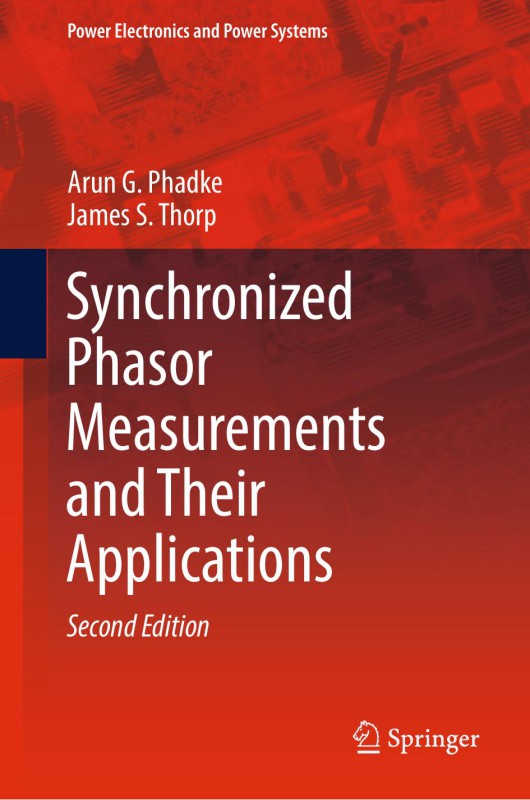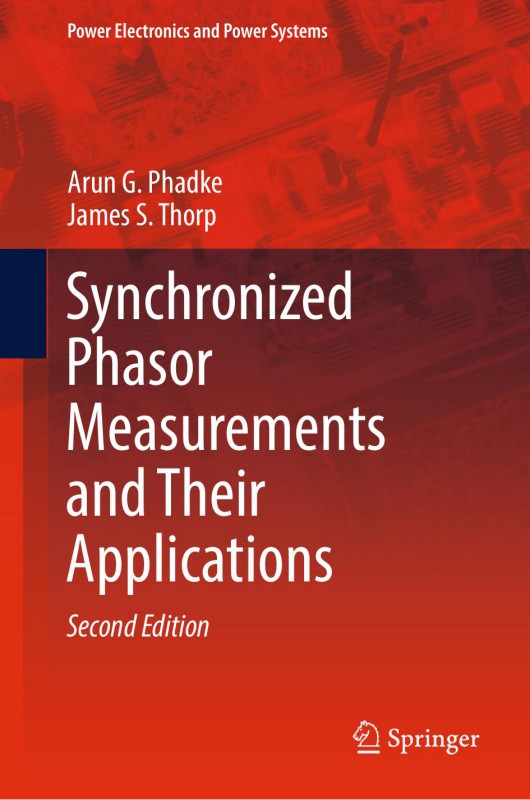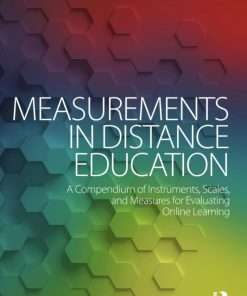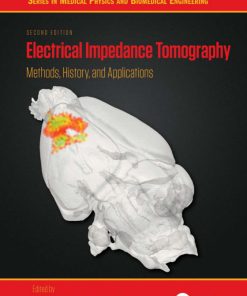(Ebook PDF) Synchronized Phasor Measurements and Their Applications 2nd edition by Arun Phadke, James Thorp 331950584X 9783319505848 full chapters
$50.00 Original price was: $50.00.$25.00Current price is: $25.00.
Authors:Arun G. Phadke; James S. Thorp , Series:Mechatronics Engineering [161] , Tags:Technology & Engineering; Power Resources; General; Machinery; Electrical , Author sort:Phadke, Arun G. & Thorp, James S. , Ids:Google; 9783319505848 , Languages:Languages:eng , Published:Published:Jan 2017 , Publisher:Springer , Comments:Comments:This book builds on the cutting edge research presented in the previous edition that was the first of its kind to present the technology behind an emerging power systems management tool still in the early stages of commercial roll-out. In the intervening years, synchrophasors have become a crucial and widely adopted tool in the battle against electricity grid failures around the world. Still the most accurate wide area measurement (WAMS) technology for power systems, synchronized phasor measurements have become increasingly sophisticated and useful for system monitoring, as the advent of big data storage allows for more nuanced real-time analysis, allowing operators to predict, prevent and mitigate the impacts of blackouts with enhanced accuracy and effectiveness. This new edition continues to provide the most encompassing overview of the technology from its pioneers, and has been expanded and updated to include all the applications and optimizations of the last decade.
Synchronized Phasor Measurements and Their Applications 2nd edition by Arun G. Phadke, James S. Thorp – Ebook PDF Instant Download/DeliveryISBN: 331950584X, 9783319505848
Full download Synchronized Phasor Measurements and Their Applications 2nd edition after payment.

Product details:
ISBN-10 : 331950584X
ISBN-13 : 9783319505848
Author : Arun G. Phadke, James S. Thorp
This book builds on the cutting edge research presented in the previous edition that was the first of its kind to present the technology behind an emerging power systems management tool still in the early stages of commercial roll-out. In the intervening years, synchrophasors have become a crucial and widely adopted tool in the battle against electricity grid failures around the world. Still the most accurate wide area measurement (WAMS) technology for power systems, synchronized phasor measurements have become increasingly sophisticated and useful for system monitoring, as the advent of big data storage allows for more nuanced real-time analysis, allowing operators to predict, prevent and mitigate the impacts of blackouts with enhanced accuracy and effectiveness. This new edition continues to provide the most encompassing overview of the technology from its pioneers, and has been expanded and updated to include all the applications and optimizations of the last decade.
Synchronized Phasor Measurements and Their Applications 2nd Table of contents:
1 Introduction
1.1 Historical Overview
1.2 Phasor Representation of Sinusoids
1.3 Fourier Series and Fourier Transform
1.3.1 Fourier Series
1.3.2 Fourier Transform
1.4 Sampled Data and Aliasing
1.5 Discrete Fourier Transform (DFT)
1.5.1 DFT and Fourier Series
1.5.2 DFT and Phasor Representation
1.6 Leakage Phenomena
References
2 Phasor Estimation of Nominal Frequency Inputs
2.1 Phasors of Nominal Frequency Signals
2.2 Formulas for Updating Phasors
2.2.1 Non-recursive Updates
2.2.2 Recursive Updates
2.3 Effect of Signal, Noise, and Window Length
2.3.1 Errors in Sampling Times
2.4 Phasor Estimation with Fractional Cycle Data Window
2.5 Quality of Phasor Estimate and Transient Monitor
2.6 DC Offset in Input Signals
2.7 Non-DFT Estimators
References
3 Phasor Estimation at Off-Nominal Frequency Inputs
3.1 Types of Frequency Excursions Found in Power Systems
3.2 DFT Estimate at Off-Nominal Frequency with a Nominal Frequency Clock
3.2.1 Input Signal at Off-Nominal Frequency
3.3 Post Processing for Off-Nominal Frequency Estimates
3.3.1 A Simple Averaging Digital Filter for 2f0
3.3.2 A Re-sampling Filter
3.4 Phasor Estimates of Pure Positive Sequence Signals
3.4.1 Symmetrical Components
3.5 Estimates of Unbalanced Input Signals
3.5.1 Unbalanced Inputs at Off-Nominal Frequency
3.5.2 A Nomogram
3.6 Sampling Clocks Locked to the Power Frequency
3.7 Non-DFT Type Phasor Estimators
References
4 Frequency Estimation
4.1 Historical Overview of Frequency Measurement
4.2 Frequency Estimates from Balanced Three-Phase Inputs
4.3 Frequency Estimates from Unbalanced Inputs
4.4 Nonlinear Frequency Estimators
4.5 Other Techniques for Frequency Measurements
References
5 Phasor Measurement Units and Phasor Data Concentrators
5.1 Introduction
5.2 A Generic PMU
5.3 The Global Positioning System
5.4 Hierarchy for Phasor Measurement Systems
5.5 Communication Options for PMUs
5.6 Standards
5.6.1 History
5.6.2 Synchrophasor Measurement
5.6.3 Synchrophasor Communication
5.6.4 PDC Files
References
6 Transient Response of Phasor Measurement Units
6.1 Introduction
6.2 Nature of Transients in Power Systems
6.2.1 Electromagnetic Transients
6.2.2 Electromechanical Transients
6.3 Transient Response of Instrument Transformers
6.3.1 Voltage Transformers
6.3.2 Current Transformers
6.4 Transient Response of Filters
6.4.1 Surge Suppression Filters
6.4.2 Anti-aliasing Filters
6.5 Transient Response During Electromagnetic Transients
6.6 Transient Response During Power Swings
6.6.1 Amplitude Modulation
6.6.2 Frequency Modulation
6.6.3 Simultaneous Amplitude and Frequency Modulation
6.6.4 Aliasing Considerations in Phasor Reporting Rates
References
Phasor Measurement Applications
7 State Estimation
7.1 History-Operator’s Load Flow
7.2 Weighted Least Square
7.2.1 Least Square
7.2.2 Linear Weighted Least Squares
7.2.3 Condition Numbers, Leverage, and LAV in Linear Least Squares
7.2.4 Nonlinear Weighted Least Squares
7.3 Static State Estimation
7.4 Bad Data Detection
7.5 State Estimation with Phasor Measurements
7.5.1 Linear State Estimation
7.5.2 An Alternative for Including Phasor Measurements
7.5.3 Incomplete Observability Estimators
7.5.3.1 Criticality and Redundancy in PMU Placement
7.5.4 Partitioned State Estimation
7.6 Calibration
7.6.1 Calibration with Positive Sequence Measurements
7.6.2 Calibration with Phase Measurements
7.6.3 Simultaneous Calibration of Line Parameters and Transducers
7.7 Dynamic Estimators
References
8 Control with Phasor Feedback
8.1 Introduction
8.2 Linear Optimal Control
8.3 Linear Optimal Control Applied to the Nonlinear Problem
8.4 Coordinated Control of Oscillations
8.5 Polytopic Control Using LMIs
8.5.1 Phasor Measurement-Based Adaptive Control
8.5.2 Future Research on Phasor-Based Controls
References
9 Phasor Measurement-Enabled Decision Making
9.1 Discrete Event Control
9.2 Decision Trees
9.2.1 Classification and Regression Tree (CART)
9.2.2 Fisher’s Linear Discriminant Applied to Synchrophasor Data (FLDSD) Technique
9.2.3 Applications of FLDSD in Power Systems
9.3 Synchrophasor Data Conditioning and Validation
9.3.1 Three Sample-Based Quadratic Prediction Algorithm
9.3.2 A Methodology for Performing Synchrophasor Data Conditioning and Validation
9.3.3 Alternate Approaches for Addressing Data Quality Issues in a LSE
References
10 Protection Systems with Phasor Inputs
10.1 Introduction
10.2 Differential Protection of Transmission Lines
10.3 Distance Relaying of Multiterminal Transmission Lines
10.4 Adaptive Protection
10.4.1 Adaptive Out-of-Step Protection
10.4.2 Security Versus Dependability
10.4.3 Transformer
10.4.4 Adaptive System Restoration
10.5 Control of Backup Relay Performance
10.5.1 Hidden Failures
10.6 Intelligent Islanding
10.7 Supervisory Load Shedding
References
11 Electromechanical Wave Propagation
11.1 Introduction
11.2 The Model
11.3 Electromechanical Telegrapher’s Equation
11.4 Continuum Voltage Magnitude
11.5 Effects on Protection Systems
11.5.1 Overcurrent Relays
11.5.2 Impedance Relays
11.5.3 Out-of-Step Relays
11.5.4 Load Shedding
11.6 Dispersion
11.7 Parameter Distribution
People also search for Synchronized Phasor Measurements and Their Applications 2nd:
what is phasor and phasor diagram
what are phasor diagrams
how to use phasor diagram
synchro phasors
synchronized phasor measurement applications in power systems












